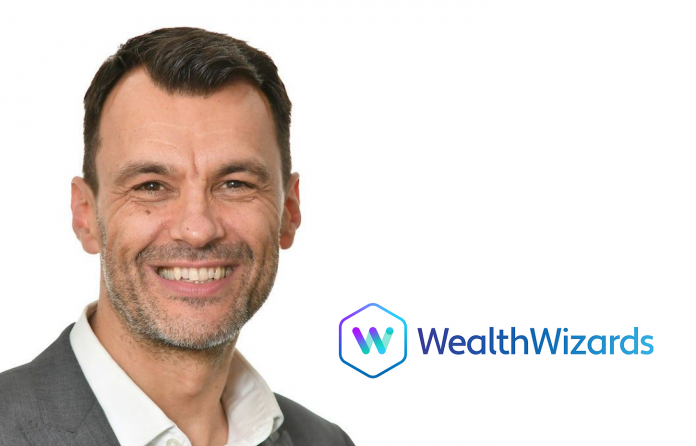Wealth managers typically focus on older people, as that is where the money is. However, young investors hold the wealth of tomorrow and capturing them early will stop them going elsewhere.
There is a huge global savings and advice gap. A recent study from Capital One and The Decision Lab found that 77% of Americans are anxious about their financial situation, with a common fear (68% of respondents) being they will not have enough money to retire. This is having a big impact on their lives, with 43% feeling fatigued, 42% having trouble concentrating at work and 41% having trouble with sleeping. The report continues to state that if people are stressed, they are less likely to save or plan their spending, only making situations worse.
There are multiple necessary steps to fix this solution, but one of the best is through education from an early age. Unfortunately, financial literacy is not very common within schools. Even if it is taught, it is not in-depth enough. Simon Binney, business development director at Wealth Wizards, said, “I studied commerce and economics, but I was never taught financial planning. Looking back, it just seems ridiculous, because everyone needs to have a basic knowledge of it.” Everyone will earn money, need to pay bills and save for future spending, whether it is a holiday or retirement. This is a crucial life skill that Binney believes should be on the school curriculum from an early age.
It doesn’t have to be an intensive course. One of the examples Binney offered were children’s books that go over the basics, such as a squirrel putting away their acorns for a later day. A lot of banks and FinTechs are starting to target children. For example, Greenlight Financial Technology gives kids a debit card that parents can manage. These types of services are becoming a little more common, but wealth managers should be following this movement, “If you feel that people are old enough to have a bank account, then they’re old enough to have financial guidance and advice, because otherwise what are they going to do with that money?”
The workplace has become a place for financial education for many people, but it is not enough. Binney added, “In the workplace, we’re finding there is an overwhelming source of information, which is good in some ways, but most of it isn’t helpful. There’s a lot of robo advice, but 98% of robo advisers in the UK don’t give advice, it’s just guidance. Effectively what you’re doing is going to an uneducated population and saying, ‘here’s loads of things you could do, now go off and do them.’” As a result, people still feel uncertain and will hop onto Google to find out how to solve debts or invest money. A worrying study from Bank Leumi claimed that 90% of British consumers feel they are uneducated about personal finance and 47% are looking to their banks for help.
This problem is what Wealth Wizards was built to solve. Its mantra is to make financial advice and guidance available and affordable to everyone. Its flagship product Turo is leveraged by wealth managers, tier one banks, building societies, and more, to automate guidance and advice processes. Its technology can help consumers quickly complete a financial health check to find out what they are doing well and not doing well, where they might need help, and how they can achieve proposed financial goals. This ensures people can prepare for buying a house or saving up for a child’s education. Importantly, it can help the consumer know if they will have enough money for retirement, rather than waiting until they are 55 and realise, they haven’t saved enough.
Why should wealth managers aim at the youth?
One of the reasons the advice and guidance gap has manifested is due to a lack of support and understanding. Alongside the lack of knowledge, many young adults feel financial advice is out of their reach financially. On the opposite side, many wealth managers, and independent financial advisers (IFAs) cannot afford to support younger audiences, as they are typically seen as having a lack of money. Firms have limited resources and an advisers’ time is very expensive, so they cannot spend time supporting the smaller opportunities.
The trouble is, these low-net-worth clients are the high-net-worth clients of tomorrow, Binney said. This is not a mystery to wealth firms and IFAs, it’s simply they have not got the resources to spend time focusing on the younger clients. “We’ve got this kind of double-edged sword whereby the advice firms can’t afford to service younger people. So, they literally wait until they get older, and they’ve got enough money and just hope they come to them. And the younger people are kind of like, ‘well, I’m scared of financial advisers because they’re probably expensive, they’re for people with lots of money, and I don’t really understand what they do anyway.’” This is where technology can play a critical role. By leveraging a digital advice tool, the advisers can have more time interacting with clients, rather than manual workloads. A solution like Wealth Wizards can automate various steps of the advice process, leaving the adviser to focus on engagement. It can also provide younger audiences with a digital tool they can engage with and boost their financial literacy in a cheap and easy manner.
Binney explained there is a need for wealth managers to take a “cradle to grave” approach. For years, banks have given special products for younger people, whether it is free bank cards or student accounts, there are products designed to attract teenagers. By onboarding a customer early, it helps build a trusted relationship and means they are more likely to stay a loyal customer. Wealth management firms need to follow this route.
“If you’re nurturing people at a young age as a trusted source, whether as a high street bank or a big wealth firm, people will probably stay with you if you look after them. If you just wait for them to become wealthy enough to deal with you, there’s a ‘let’s just hope that happens’ mentality. But if you get them in at an early age, you’re actually assisting them along that path much more quickly, and they’re more likely to have the sort of assets that you’re looking to help them with as they get older.”
How does interaction differ with younger audiences?
One of the biggest differences with interacting with a younger audience is the preference of digital interactions, he explained. Thanks to services like Amazon and Netflix, people have become accustomed to online interactions being streamlined and simple. This translates into how they want to interact with financial services. Binney said, “It needs to be intuitive and compelling, and it can’t be a boring financial services site. It has got to be very vibrant and quickly give users information that’s actually going to help them. This will start to build that trusted relationship.”
An important part of the online interaction is being able to self-serve, rather than needing to interact with someone. “If every time you went on to Amazon and halfway through your purchase, even though you know exactly what you want, someone phoned you up asking how you are doing and what you’re looking at, you would be like ‘piss off, I just want to buy a book.’” Binney continued to state that the digital platform should give the customer quick access to information and answers to questions they might have. But there should also be an option to speak with someone if they need it.
To achieve this, firms need digital wealth management processes that can help people through the journey. For example, Wealth Wizards leverages AI and machine learning to ensure customers can have a streamlined experience, without needing to speak to someone. It ensures a user has an engaging and tailored journey that supplies them with all the necessary information, rather than being taken through a long-winded process that is not appropriate or applicable to them. The customer gets a personalised report that shows what they need to do and how they achieve it. By making its services engaging and not a boring set of questions, Wealth Wizards’ financial health check solution, which takes six minutes to finish, has an 85% completion rate. “Although that doesn’t sound long, in this day and age, for younger people six minutes is forever. So, the fact we’ve got an 85% completion rate, is massive and we use a nudging function on the remaining 15%, of which 35% go on to complete the financial health check”.
This self-serve feature is also favourable for wealth firms. With their limited resources, they do not want to have to keep interacting with consumers to answer questions that a simple FAQ or chatbot could handle. It makes serving younger customers more viable as it is less of a resource drain. The firm can stay with that customer throughout their life and when they get older and become high-net clients, they are already a customer, removing the need to reach out to them and pitch their services.
Investors finding their own support
If a wealth manager does not start focusing on the younger generation, other wealth firms will. “If firms want to get this big market share, the big assets and look after as many people as possible, they’ve got to adapt and attract a younger generation of people.”
A common sight in the market Binney has seen is small IFAs selling their business, simply because they do not want to have to enter the digital era. But for those wanting to stay competitive, they need to target younger adults, or they could risk going out of business.
“We’re working with one building society and their average customer age is 64. Now this firm is terrified because ten years ago it was 50. Their customers are going to die at some point, and they’re not going to have any customers left.” A way this building society is adapting to the new age is through a hybrid solution. It is bringing new people into its services via a digital solution. During the onboarding process there is an option to speak to someone. Most people won’t need it, and some will call for a simple question. The ones that want a longer call can now be given it. This method keeps all customer types happy and reduces the total time advisers are needed to speak with customers.
It is not just other wealth management companies to be concerned about. With WealthTech apps, like Robinhood, giving more people capability to build portfolios, they might never feel the need to turn to an adviser.
Social media has become a behemoth in today’s world. It has long gone from being a way to share family photos or cat pictures, it is now influencing a lot of what people do or think. A report from Finder found that half of UK investors use social media to inform their investing decisions. The four most common apps for this guidance are YouTube (21%), Facebook (16%), Instagram (15%) and Twitter (14%). Sharing a similar finding, a survey from Hargreaves Lansdown found that 56% of people aged between 18 and 34 get investment ideas from social media platforms.
There have been a number of situations that show the power of social media on investing. Tweets from Elon Musk often send ripples across the cryptocurrency market, with his endorsements or concerns able to shift the value of coins monumentally. The GameStop saga is another scenario where social media influenced people. A campaign started on Reddit saw thousands of people buy stocks in the faltering company, pushing its value through the roof. Some might make good returns following the trends, but there will be many that suffer greatly.
Binney believes that while many people need to understand that “if anything looks too good to be true is probably because it is,” the onus is on wealth firms to be sufficiently looking after their customers, so they do not feel the need to follow trends on social media. If firms are providing customers with affordable and accessible advice, it minimises the impact of a social media hype.
What separates Wealth Wizards from the competition
Wealth Wizards has over 11 years of experience in the industry. It has not simply rested on its laurels in this time but has been actively learning from each of its clients and transforming its solution into the best it can be. One of the other benefits of the company, Binney explained, is that it has a team of old and young tech engineers. This helps the company know exactly what younger generations want and how their solution can better serve their needs.
However, the biggest boon of Wealth Wizards is that it helps firms with both their high-net and low-net worth clients. Its digital-first offering onboards the younger generation of customers, guides them and educates them through the financial world via a chatbot-facilitated interaction. At the same time, its Turo for advisers solution is aimed at helping firms with their high-net worth relationships, making them more efficient and compliant. “The reason those two things are important is they make the high-net-worth side more efficient and frees up the adviser’s time, so they can engage with the younger generation as they come through as new customers.”
Copyright © 2021 FinTech Global











